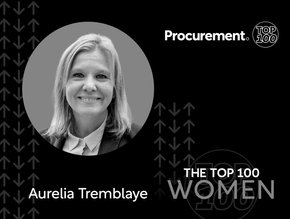Navigating the complexities of vendor management

Empowering organisations to effectively control costs, reduce risks, ensure excellent service, and derive long-term value, vendor management can – when done correctly – generate great success and value for organisations by building, maintaining, and strengthening mutually-beneficial supplier relationships.
While the benefits are clear, the multidisciplinary nature of the procurement function leaves many organisations grappling to navigate the stressful and complex process.
Benefits of vendor management
- Better selection of vendors
- Enhanced contract management
- Improved performance management
- Enriched vendor relationships
- Greater value
Source: Zycus
So, what is driving this complexity? DeepStream’s founder and CEO, Jack Macfarlane explains: “There is a need for change in simplifying processes and making them more transparent. Although client and customer communication have long been managed using the latest client relationship management software, vendor relationships have been held back by antiquated and opaque systems. Most of this has been – and, in many cases, still is – managed through old-fashioned methods of communication and storing information, such as email and spreadsheets.”
With many existing solutions failing to step up to the mark, “a lack of transparency is causing knowledge silos between departments,” adds Macfarlane.
“Even at the highest enterprise level, in companies that have otherwise embraced new technology, managing vendor relationships and assets in a single location has remained a significant challenge.”
Another challenge for industries is the depth of specialism that the function now requires. “As keeping and maintaining sufficient breadth and depth of data on suppliers becomes increasingly important, vendor management has evolved into a digital ecosystem consisting of multiple best-of-breed solutions,” explains Macfarlane.
“Vendor management is largely about gaining the commitment of your vendors to assist and support the operations of your business, while also meeting their expectations of you, your services and your own commitment to them. With collaborative technology, which can enhance the ability to ask questions and compare line items, one can unlock full visibility, making transparent and smarter decisions easier to execute. This way, accepting competitive bids – rather than blindly accepting any price pitched – also becomes easier to oversee and carry out.”
One of the most important and valuable aspects of technology is to eliminate guesswork; this can be achieved with innovative solutions that maximise the value across all managed suppliers. “Technical innovations can power all the vital aspects of a specific vendor, from maintaining a healthy relationship to establishing mutually beneficial commitments, through streamlining, automating and improving processes across a variety of business operations, including contract management, risk performance, compliance, innovation and sustainability,” says Macfarlane.
Adoption of digital solutions leads to higher maturity
Leading procurement functions that have implemented digital solutions are now sitting higher on the company maturity curve. Macfarlane explains: “such maturity allows for contract compliance to be strengthened and better purchasing insights delivered, all in all, setting up procurement as a profit centre rather than a cost centre, results in a potential competitive advantage.”
Macfarlane adds: “Teams that are capable of implementing new solutions and promoting their adoption have reaped the benefits. By embracing the alignment of people, processes and technology, we've seen that teams are significantly improving the value case and perception of procurement within their organisations. This means that best-of-breed solutions are used to accelerate value delivery in specific procurement processes.”
But it’s not all about technology. While these solutions can be used alongside S2P platforms to provide a seamless experience, it will be vital for organisations to gain the right talent to ensure the smooth running of these operations. This shift in focus from traditional transactional procurement towards value-added activities is creating a surge in automated manual processes, leaving more time for organisations to focus on improving strategic efforts; but the function will need to conquer the war on talent to ensure that their adaptability and technological advancements to gain a competitive and strategic edge is not in vain.
Similarly, organisations should also pay close attention to their communications. “We know that vendor relationships directly impact a company’s success, and these relationships require collaboration. Paying close attention to your suppliers, in the same way as you do with customers, adds value and complements existing practices and systems,” explains Macfarlane.
“Core processes can help with standardisation as they create efficient ways of working and can ensure that healthy relationships are maintained. Long-term vendor relationships can be just like a marriage: they can be difficult to sustain and require a great deal of effort, adaptation and compromise. As such, vendor relationships must be protected by focusing on win-win situations, because if only one party benefits, the relationship will quickly become unbalanced.
“It's critical not to see the introduction of innovation as a cost-cutting exercise, but rather as an opportunity to add value to a long and healthy partnership.”
What’s in store for the future? Digitalisation. With 40% of businesses investing in software to tackle supply chain and procurement issues, technology is driving change in how competitive and efficient the supply chain is.
“Managing vendors in a streamlined way means that more vendors can be engaged for transactions, meaning procurement teams get better terms and drive profitability for their respective businesses,” says Macfarlane.
He concludes: “We are moving away from a fairly static buyer-vendor relationship to a more fluid and dynamic relationship type. Whilst COVID-19 drove an acceleration in digital adoption by many businesses, the relevance has increased even further with the recent supply chain disruptions we have seen in the market.
“Our team was at the Intersolar conference in Munich recently, and the overwhelming sentiment from procurement teams was around how rapidly vendor availability was changing – the need for a transparent, open and dynamic way of engaging with alternative suppliers is being seen as something that can mean a business survives or has to cease procurement operations for lack of vendor visibility.”






